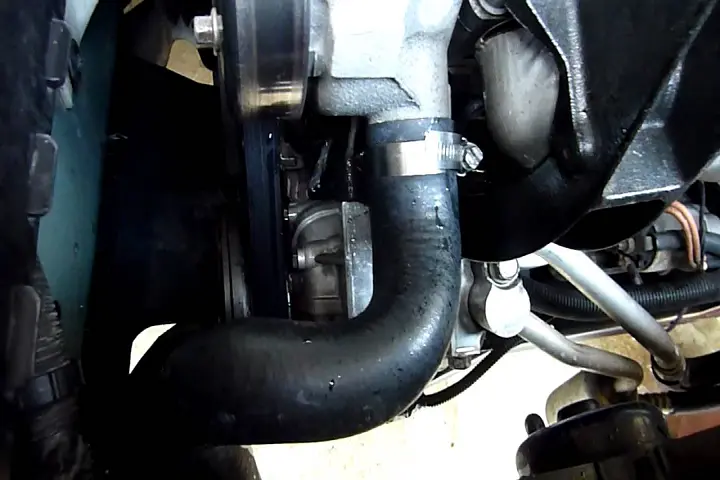Have you ever stepped out of your house, only to be greeted by an ominous puddle beneath your trusty vehicle? You’re not alone in this automotive mystery. Leaking From My Car are a common headache for vehicle owners worldwide, but they don’t have to remain an enigma.
This comprehensive guide will transform you into a savvy leak detective, empowering you to identify, understand, and address those pesky drips before they evolve into major problems that could leave you stranded on the roadside.
The Telltale Puddle: Spotting Leaks Before They Spell Trouble
Fluid leaks often serve as the canary in the coal mine for your vehicle’s health. But it’s crucial to understand that not all leaks are created equal. Some might be as innocuous as condensation from your air conditioning system, while others could be harbingers of impending engine failure. The key to maintaining your car’s health lies in staying vigilant and investigating any unusual spots or stains you notice.
“A small leak today could be a big problem tomorrow. Never ignore what your car is trying to tell you.” – Anonymous Mechanic
To catch leaks early and potentially save yourself from costly repairs down the road, incorporate these practices into your routine:
- Regularly inspect the ground where you park, especially after the car has been stationary for a while
- Look for stains on your driveway or garage floor – these can provide clues even when your car isn’t actively leaking
- Make it a habit to check under the car before you drive off, particularly if you haven’t used it for a few days
- Pay attention to any new smells or performance issues while driving – these can sometimes indicate leaks that aren’t visible when the car is parked
- Consider placing a large piece of cardboard or newspaper under your car overnight to catch and identify any active leaks
Remember, being proactive about leak detection can save you time, money, and a lot of frustration in the long run.
Cracking the Code: Identifying Fluid Leaks by Color and Texture
One of the first steps in identifying car leaks is to examine the color and consistency of the fluid. This visual inspection can provide valuable clues about what’s leaking and potentially how serious the issue might be. Here’s a comprehensive reference table to help you decode what might be leaking from your vehicle:
| Fluid Type | Color | Consistency | Smell | Location | Potential Severity |
| Engine Oil | Brown to black | Slick, oily | Burnt or petroleum-like | Front or center of car | Moderate to High |
| Transmission Fluid | Red to brown | Thin, oily | Sweet or burnt | Center to front of car | High |
| Power Steering Fluid | Red, pink, or clear | Thin, oily | Burnt | Front of car | Moderate |
| Brake Fluid | Clear to brown | Slippery, similar to vegetable oil | Subtle, chemical | Usually near wheels | Very High |
| Coolant/Antifreeze | Green, orange, or pink | Slimy, sticky | Sweet | Front of car or under radiator | High |
| Water | Clear | Thin | Odorless | Usually under air conditioner | Low (unless mixed with other fluids) |
| Screenwash/Wiper Fluid | Blue or pink | Thin, watery | Soapy | Near the windshield | Low |
| Fuel (Gasoline or Diesel) | Clear to brown | Thin, evaporates quickly | Strong fuel odor | Under the car, near fuel tank | Very High |
Remember, these are general guidelines. Variations can occur based on the specific products used in your vehicle, the age of the fluid, and environmental factors. When in doubt, it’s always best to consult with a professional mechanic.
Common Culprits: A Deep Dive into Vehicle Fluid Leaks
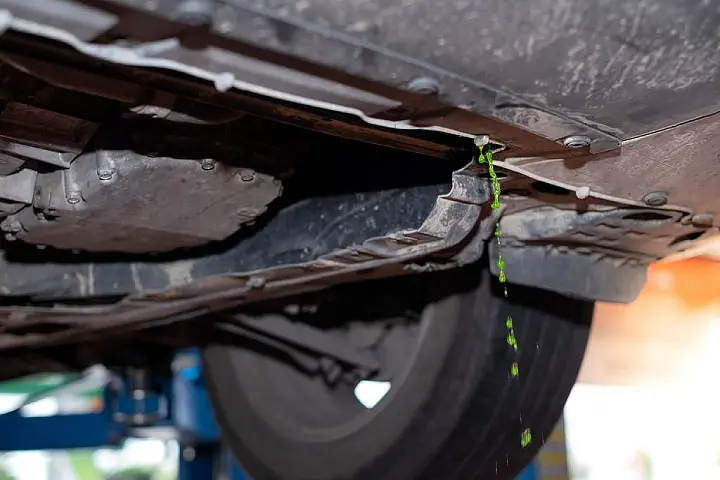
Engine Oil: The Lifeblood of Your Car
An engine oil leak is one of the most common issues car owners face, and for good reason. Engine oil plays a crucial role in lubricating and protecting your engine’s moving parts. A leak can lead to serious damage if left unchecked, potentially resulting in complete engine failure.
Symptoms of an engine oil leak:
- Dark brown or black stains under the car, typically near the front or center
- Burning smell, especially after driving or when the engine is hot
- Low oil level on the dipstick, even shortly after an oil change
- Blue smoke from the exhaust, indicating oil is burning in the combustion chamber
- Dashboard warning lights for low oil pressure or check engine
Potential causes:
- Worn gaskets or seals, particularly around the oil pan or valve cover
- Damaged oil pan, often from impact with road debris
- Loose or worn oil filter
- Deteriorated valve cover gasket
- Leaking front or rear crankshaft seals
- Cracked engine block (in severe cases)
Case Study: John, a software engineer from Seattle, noticed dark stains on his driveway and a burning smell after short trips. A quick check revealed his oil level was low, despite a recent oil change. He wisely took his car to a mechanic who found a worn valve cover gasket. The $150 repair saved John from potential engine failure that could have cost thousands to fix. This case underscores the importance of addressing oil leaks promptly.
Transmission Fluid: Keeping Your Gears in Check
A transmission fluid leak can be particularly tricky and potentially costly. Unlike engine oil, transmission fluid doesn’t get “used up” during normal operation, so any loss typically indicates a leak.
Signs of a transmission fluid leak:
- Red or brown stains under the middle of the car
- Difficulty shifting gears or delayed engagement
- Slipping transmission, especially under acceleration
- Overheating transmission, which can cause a burning smell
- Low fluid level in the transmission
Automatic vs. Manual Transmission Leaks:
- Automatic: Often due to worn seals, gaskets, or a damaged transmission pan
- Manual: Can be caused by a worn clutch, input shaft seal, or output shaft seal
Potential Leak Sources:
- Transmission pan gasket
- Input or output shaft seals
- Transmission cooler lines
- Torque converter seal
- Valve body gaskets
Prevention Tips:
- Regular transmission fluid checks and changes
- Avoid overheating the transmission by not overloading the vehicle
- Address small leaks promptly to prevent bigger issues
Power Steering Fluid: The Silent Helper
A power steering fluid leak might not seem as critical as an oil or transmission fluid leak, but it can lead to difficult steering and potential safety issues if left unaddressed.
Tell-tale signs:
- Red or pink fluid under the front of the car
- Whining noise when turning the wheel, especially at low speeds
- Stiff or difficult steering, particularly when the car is cold
- Groaning or squealing noise from the steering system
DIY Check: With the engine off, locate and check the power steering fluid reservoir. If it’s low and you’ve recently filled it, you likely have a leak. Be sure to check the color and consistency of the fluid as well – if it’s dark or gritty, it may need to be flushed and replaced.
Common Leak Sources:
- Power steering pump seals
- Steering gear seals
- Power steering hoses or connections
- Rack and pinion assembly
Quick Tip: While topping up the power steering fluid can temporarily alleviate symptoms, it’s crucial to find and fix the source of the leak to prevent further damage to the system.
Brake Fluid: Safety on the Line
A brake fluid leak is one of the most serious issues you can encounter in your vehicle. Even a small leak can compromise your braking ability, potentially leading to a dangerous situation on the road.
Why brake fluid leaks are serious:
- Air can enter the brake lines, causing a spongy pedal and reduced braking efficiency
- Brake performance can degrade rapidly, sometimes with little warning
- Complete brake failure is possible if the fluid level becomes too low
Signs of a brake fluid leak:
- Soft or spongy brake pedal
- Brake warning light on the dashboard
- Puddles of clear to brown fluid near the wheels or under the brake master cylinder
- Reduced braking performance
Emergency measures:
- Don’t drive the car if you suspect a brake fluid leak
- Have the car towed to a mechanic for inspection and repair
- Never “top up” brake fluid without fixing the leak source, as this can introduce air into the system
Common Leak Sources:
- Brake calipers
- Brake line connections
- Wheel cylinders (in drum brake systems)
- Master cylinder
- ABS control module
Remember, when it comes to brake fluid leaks, it’s always better to err on the side of caution. Your safety and the safety of others on the road depend on a properly functioning brake system.
Coolant/Antifreeze: Temperature Control Gone Awry
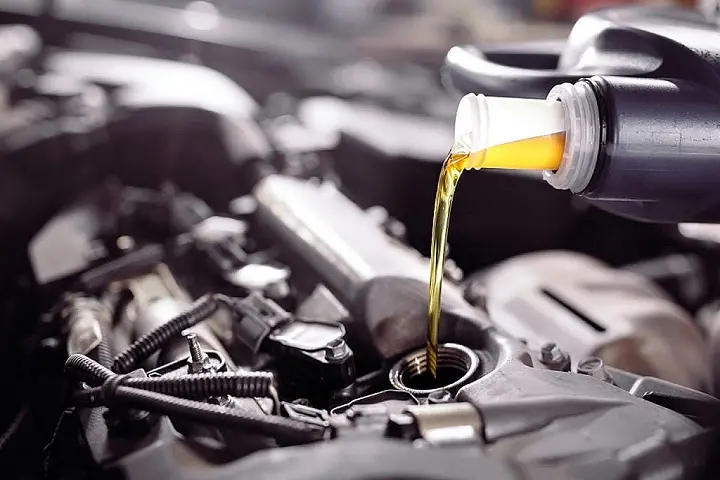
A coolant leak or antifreeze leak can lead to engine overheating and severe damage if not addressed promptly. The cooling system in your car plays a crucial role in maintaining optimal engine temperature, and any compromise in this system can have serious consequences.
Risks of coolant leaks:
- Engine overheating, which can occur suddenly and cause significant damage
- Warped cylinder heads, leading to a blown head gasket
- Cracked engine block in severe cases
- Corrosion of engine components due to inadequate coolant levels
Signs of a coolant leak:
- Sweet smell, especially when the engine is warm
- Colorful puddles (green, orange, or pink) under the car
- White exhaust smoke
- Engine temperature gauge reading higher than normal
- Low coolant level in the reservoir
Locating the leak source:
- Check the radiator for cracks or loose connections
- Inspect hoses for wear, damage, or loose clamps
- Look for leaks around the water pump and thermostat housing
- Check the overflow tank and its hoses
- Examine the heater core, which can cause coolant smell inside the car if leaking
Prevention Tips:
- Regular coolant flushes and replacements as per manufacturer recommendations
- Inspection of hoses and clamps during routine maintenance
- Addressing small leaks promptly to prevent them from becoming major issues
Water: Harmless Drip or Hidden Issue?
A water leak isn’t always cause for concern, but it’s worth investigating to ensure it’s not masking a more serious problem.
Normal water drips:
- Condensation from the air conditioning system, especially on hot, humid days
- Rainwater drainage from sunroof or door seals
When water isn’t just water:
- Sweet smell could indicate coolant mixed with the water
- Consistent dripping when the A/C is off might signal a more serious leak
- Water inside the car could indicate a leaking heater core or clogged A/C drain
Potential issues to watch for:
- Clogged A/C evaporator drain
- Leaking heater core
- Damaged windshield seal
- Faulty sunroof drain tubes
- Worn or damaged door seals
While a water leak might seem innocuous, persistent moisture can lead to rust, mold, and electrical issues if left unchecked.
Fuel Leaks: The Silent Danger
While not as common as other types of leaks, fuel leaks are extremely serious due to the fire risk they pose. Whether it’s gasoline or diesel, any fuel leak should be addressed immediately.
Identifying gasoline leaks:
- Strong gasoline smell, especially when the car hasn’t been running
- Puddles with a rainbow sheen
- Rapid loss of fuel or decreased fuel efficiency
- Engine misfires or loss of power
- Fuel gauge showing inconsistent readings
Immediate steps for safety:
- Do not start the engine if you suspect a fuel leak
- If safe to do so, move the car away from buildings or other vehicles
- Call for professional help immediately – do not attempt to drive the car
- If the smell is very strong or you see fuel actively leaking, consider calling the fire department
Common sources of fuel leaks:
- Fuel tank
- Fuel lines
- Fuel injectors
- Fuel pump
- Carburetor (in older vehicles)
Remember, when it comes to fuel leaks, it’s always better to be overly cautious. The risk of fire or explosion makes this type of leak particularly dangerous.
DIY Detective: How to Pinpoint the Leak Source
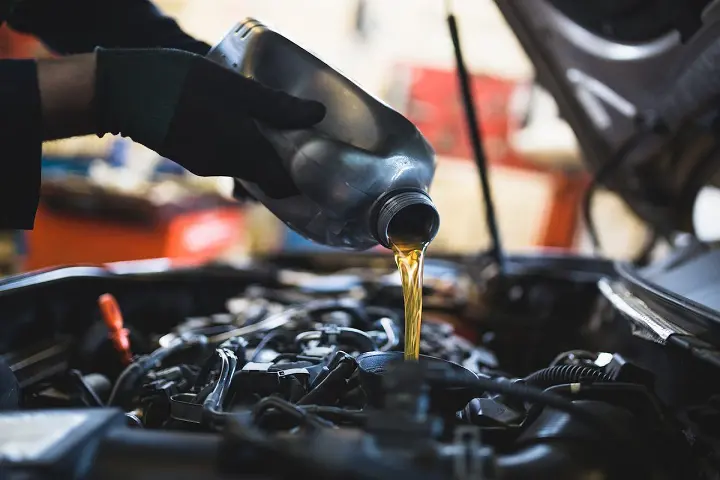
Becoming your own leak detective can save you time and money. While some leaks require professional diagnosis, there are several techniques you can use to narrow down the source of a leak:
The Cardboard Test
This simple yet effective method can help you identify the general area of a leak:
- Place a large piece of cardboard under your parked car overnight
- In the morning, check for spots and their location
- Use the position of the spots to narrow down the source
- The color and consistency of the fluid can provide additional clues
UV Dye Methods
This technique can be particularly useful for pinpointing hard-to-find leaks:
- Add UV dye to your car’s fluids (available at auto parts stores)
- Run the car for a short time to allow the dye to circulate
- Use a UV light to spot the fluorescent dye at the leak point
- This method works well for oil, coolant and transmission fluid leaks
Visual Inspection Techniques
A thorough visual inspection can often reveal the source of a leak:
- Raise the car safely on jack stands (always follow proper safety procedures)
- Use a flashlight to inspect the undercarriage
- Look for wet spots, rust, or fluid trails
- Follow fluid trails to their highest point – often the source of the leak
- Pay special attention to seals, gaskets, and connection points
Pressure Testing
For certain systems, like the cooling system, pressure testing can reveal leaks:
- Use a pressure tester (can often be rented from auto parts stores)
- Pressurize the system according to manufacturer specifications
- Look for drops in pressure or visible leaks
- This method is particularly effective for finding small coolant leaks
Remember, while these DIY methods can be helpful, always prioritize safety. If you’re unsure about performing any of these tests, it’s best to consult with a professional mechanic.
When to Call in the Pros: Serious Leaks vs. Minor Drips
While some leaks can be addressed with DIY methods, others require professional attention. Here’s a guide to help you decide when to tackle a leak yourself and when to seek expert help:
Call a pro immediately for:
- Any brake fluid leak, due to the critical safety implications
- Significant coolant leaks, especially if accompanied by overheating
- Fuel leaks, given the fire risk
- Transmission fluid leaks, which can quickly lead to transmission damage
- Power steering fluid leaks, particularly if steering becomes difficult
- Any leak you can’t confidently identify or locate
Consider DIY for:
- Minor oil leaks (if you’re comfortable with basic car maintenance)
- Wiper fluid leaks, which are generally simple to fix
- Small coolant leaks from hoses (temporary fixes only)
- Water leaks from A/C condensation
Cost considerations:
- Immediate repair is often cheaper in the long run, preventing more extensive damage
- Neglected leaks can lead to system failures, which are typically more expensive to repair
- Factor in safety – some leaks are too risky to postpone, regardless of cost
- Consider the age and value of your vehicle when deciding on major repairs
When in doubt: If you’re unsure about the severity of a leak or your ability to fix it, it’s always best to consult with a professional. Many auto repair shops offer free or low-cost inspections, which can help you make an informed decision about how to proceed.
Preventive Measures: Keeping Your Car Leak-Free
The best way to deal with leaks is to prevent them from occurring in the first place. Here are some proactive steps you can take to keep your car leak-free:
- Stick to regular maintenance schedules
- Follow your car’s recommended service intervals religiously
- Replace fluids and filters as specified in your owner’s manual
- Don’t skip or delay scheduled maintenance to save money – it often costs more in the long run
- Perform routine fluid checks
- Check oil levels weekly, especially in older vehicles
- Inspect coolant levels monthly, both in the radiator and overflow tank
- Look at brake fluid and power steering fluid levels regularly
- Check transmission fluid according to manufacturer recommendations
- Watch for signs of impending leaks
- Unusual noises, especially when turning or braking
- Changes in fluid color or smell during routine checks
- Decreased performance or changes in how the car handles
- Dashboard warning lights – don’t ignore them!
- Address small issues promptly
- Replace worn hoses and gaskets at the first sign of wear
- Tighten loose connections during routine maintenance
- Investigate any new drips or spots immediately, no matter how small
- Use quality parts and fluids
- Opt for OEM (Original Equipment Manufacturer) or high-quality aftermarket parts
- Use the grade and type of fluids
Environmental Impact: Responsible Leak Management
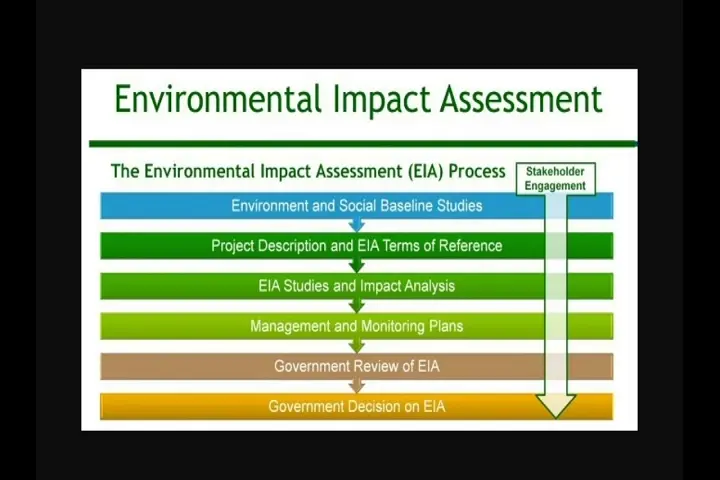
Car leaks aren’t just a problem for your vehicle – they can harm the environment too.
Proper disposal of leaked fluids:
- Never pour automotive fluids down drains or on the ground
- Use designated recycling centers for used oil and antifreeze
- Many auto parts stores accept used fluids for recycling
Eco-friendly cleanup methods:
- Use cat litter or commercial absorbents to soak up spills
- Dispose of soaked materials properly
- For larger spills, contact local environmental authorities
The Future of Leak Detection: Smart Cars and AI Diagnostics
As automotive technology advances, so do the methods for detecting and diagnosing leaks.
Emerging technologies:
- Onboard diagnostic systems that detect leaks early
- AI-powered apps that can identify leaks from photos
- Self-sealing materials for hoses and gaskets
Smart maintenance:
- Predictive analytics to forecast potential leaks
- Automated alerts for fluid level changes
- Integration with smart home systems for real-time monitoring
Conclusion: Stay Vigilant, Stay Safe
Understanding and addressing car leaks is an essential part of car maintenance. By staying alert to the signs of leaks, knowing how to identify them and taking prompt action, you can keep your vehicle running smoothly and safely for years to come.
Remember, when it comes to car leaks, knowledge is power. Don’t ignore those drips and puddles – they’re your car’s way of asking for help. With the information in this guide, you’re now equipped to decode those messages and keep your car in top shape.
“The best cure for car troubles is prevention and the best prevention is attention.” – Wise Words from a Veteran Mechanic
Stay observant, stay proactive, and keep your car leak-free!

With over 5 years of dedicated experience in the automotive industry, I am passionate about all things automotive. My journey began with a deep curiosity for automobiles, which led me to delve deeper into their mechanics, technology and trends. My expertise spans various aspects of the automotive world, from the latest electric vehicles to classic car restoration techniques. Through my articles, I aim to share my knowledge and insights, helping readers stay informed and inspired in the fast-paced world of the automobile.
